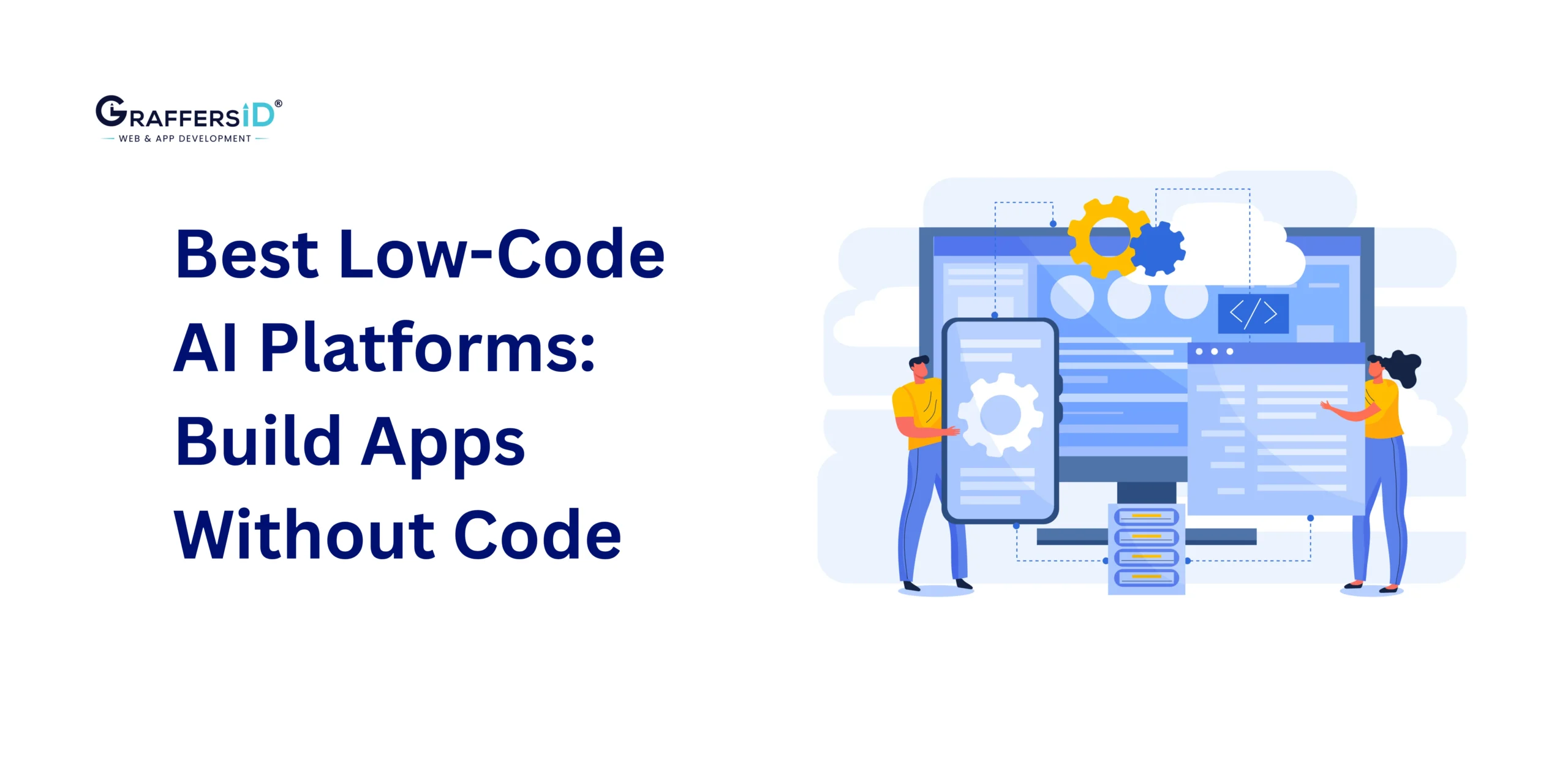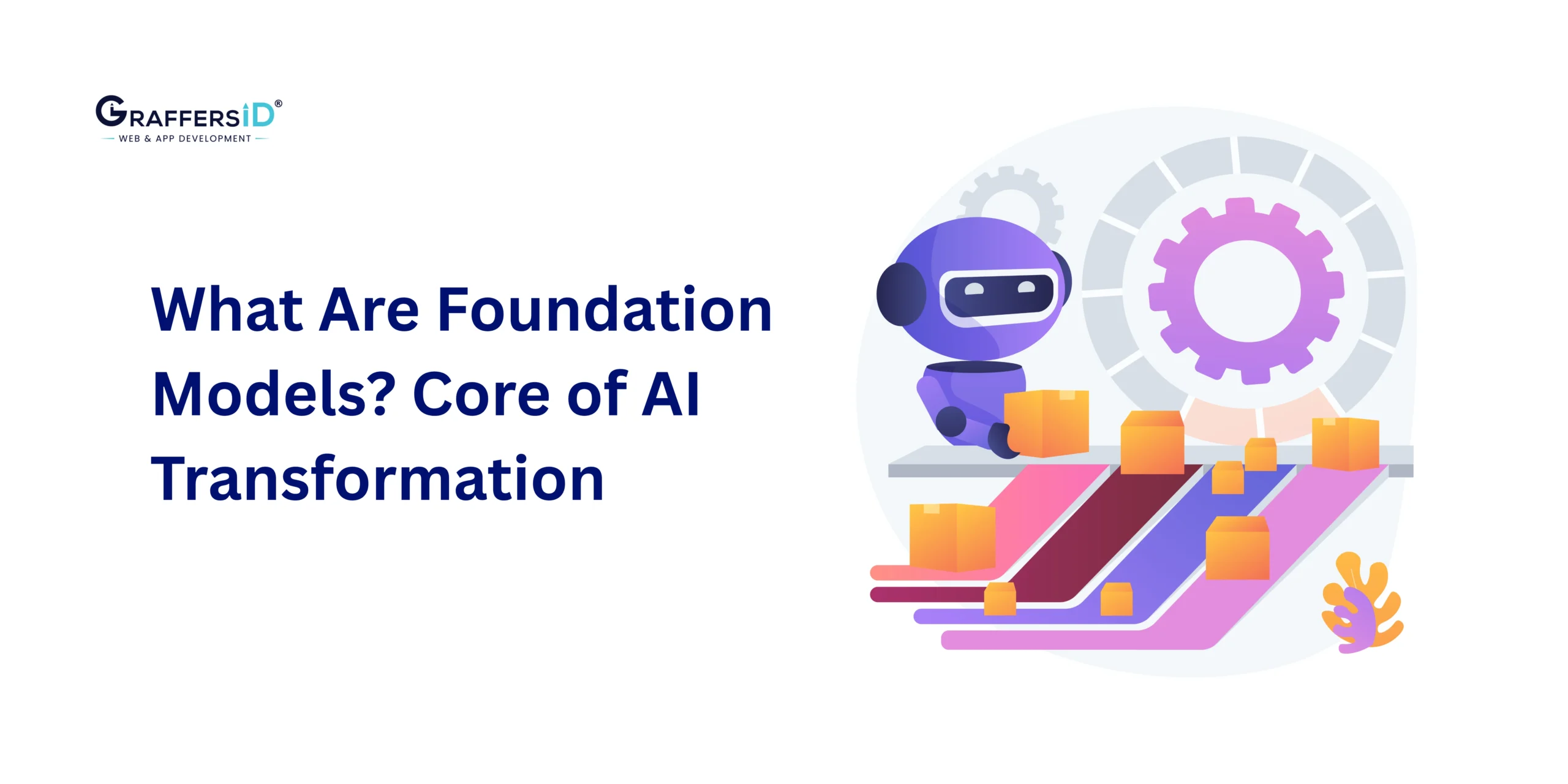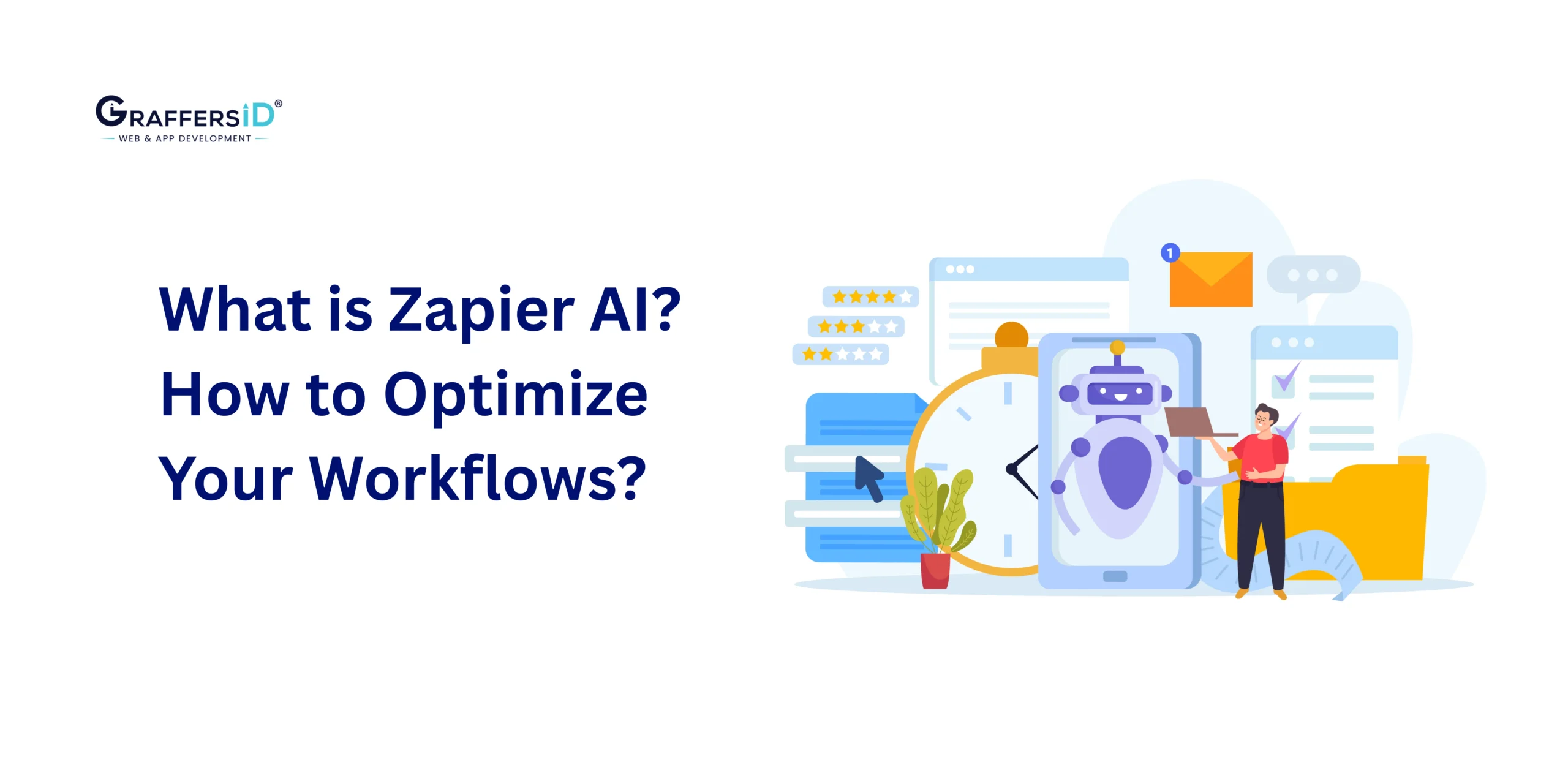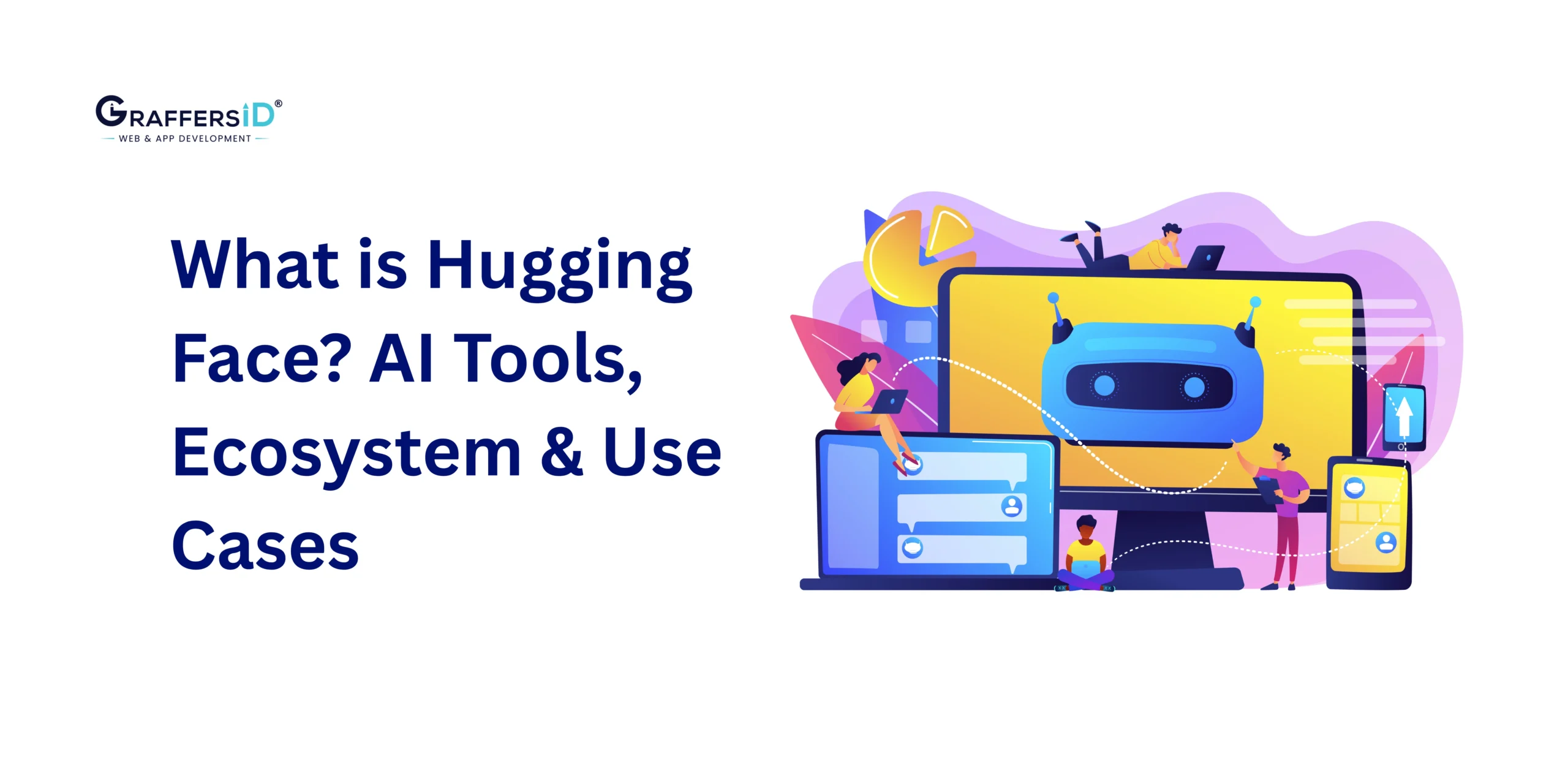In today’s fast-paced digital economy, every business leader faces the same challenge: how to build and scale applications faster without overspending on development resources. Traditional coding approaches often require months of effort, large teams, and constant debugging. In contrast, low-code development platforms in 2026 are transforming how CTOs, CEOs, and product leaders deliver software, combining drag-and-drop simplicity with AI-powered automation, pre-built templates, and smooth integrations.
From startups building their first MVPs to enterprises modernizing legacy systems, low-code platforms have become a strategic enabler for speed, cost efficiency, and customer-centric innovation. With new advancements in AI copilots, workflow automation, and API-driven integrations, these tools are no longer just alternatives to traditional coding; they’re now at the center of digital transformation strategies.
In this blog, we’ll explore the top low-code platforms to use in 2026, their benefits, challenges, and best use cases, and how decision-makers can choose the right platform to accelerate growth, improve customer experience, and boost productivity.
What is a Low-Code Development Platform in 2026?
A low-code development platform is software that automates application creation with minimal coding effort. Instead of writing thousands of lines of code, teams use:
-
Drag-and-drop interfaces
-
AI-assisted app builders
-
Pre-built templates and APIs
In 2026, modern low-code tools go beyond mobile apps; they integrate AI assistants, workflow automation, data modeling, and enterprise-grade security, enabling both technical and non-technical teams to collaborate smoothly.
Read More: Top 5 AI Coding Assistants in 2026 Every CTO Should Know About
How Low-Code Development Boosts CX and Productivity in 2026?
Adopting a low-code strategy helps enterprises achieve measurable results:
-
Faster Time-to-Market: Launch apps 3x faster with AI-assisted design.
-
Personalized CX: AI-driven low-code tools allow real-time personalization for end-users.
-
Business-IT Collaboration: Non-technical staff can build solutions without waiting on IT backlogs.
-
Operational Efficiency: Automate repetitive workflows and reduce manual intervention.
Key Benefits of Low-Code Platforms in 2026
Here are some of the important benefits of using a low-code platform in 2026 that you need to know:
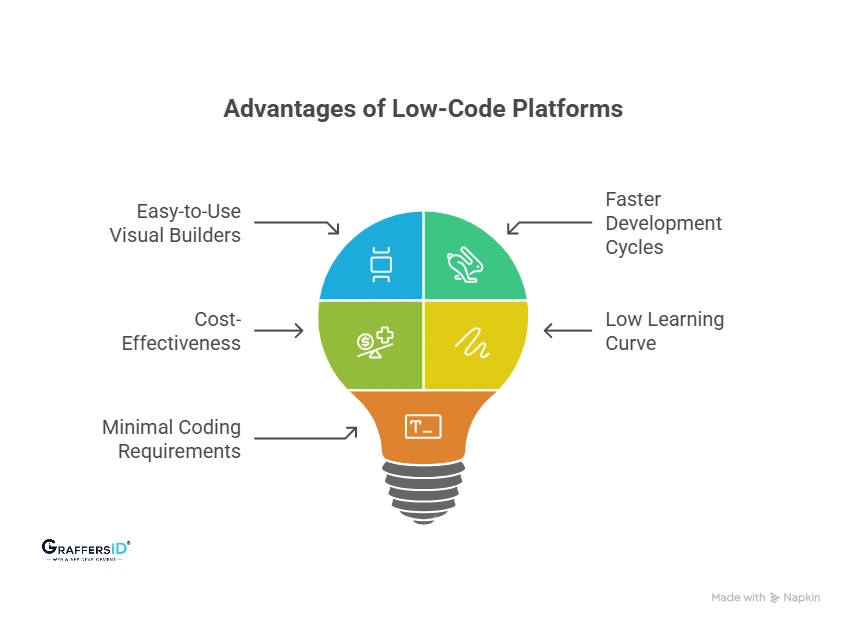
1. Easy-to-Use Visual Builders
Drag-and-drop interfaces and pre-built templates let teams launch prototypes fast. AI-powered suggestions help refine UX without deep technical skills.
2. Faster Development Cycles
Visual editors combined with built-in AI debugging catch errors early. Rapid prototyping enables frequent iterations and quicker time-to-market.
3. Cost-Effectiveness
Lower upfront investment and smaller engineering teams reduce overhead. Subscription pricing and pay-as-you-grow plans make expansion budget-friendly.
4. Low Learning Curve
Even non-developers can contribute thanks to intuitive design tools. AI copilots assist with code generation and guidance, speeding up onboarding.
5. Minimal Coding Requirements
Drag-and-drop workflows replace manual scripting. Pre-configured API connectors simplify integrations, ideal for startups and SMBs without coding expertise.
Who Can Use Low-Code Platforms in 2026?
- Developers: Professional developers use low-code platforms to speed up app delivery, automate repetitive coding tasks, and focus on high-value features like AI integrations and complex system design.
- Business Teams: Non-technical teams build apps without relying on IT, reducing bottlenecks and enabling faster workflow automation, dashboards, and customer-facing tools.
- Enterprises: Large organizations adopt low-code platforms to modernize legacy systems, streamline operations, and scale digital transformation initiatives with AI-powered automation.
- Startups & SMBs: Smaller businesses use low-code to launch cost-effective apps quickly, saving on hiring large teams while still achieving scalable, enterprise-level functionality.
Read More: Best AI Code Generators to Use in 2026 for Faster and Smarter Development
Types of Low-Code Development Platforms in 2026
Low-code tools are software development tools that allow the user to build applications without writing code. There are three types of low-code tools:
1. Rapid Application Development (RAD) Tools
These tools enable ultra-fast prototyping and deployment using drag-and-drop components and built-in UI libraries. Perfect for startups or product teams pushing out an MVP to test market fit quickly in 2026’s competitive environment.
2. Visual Programming Languages
Platforms inspired by tools like Scratch or Blockly that let non-developers build complex user interfaces and workflows through visual logic blocks. Ideal when your app needs rich UX design with minimal code.
3. API-Centric Tools
Tools focused on smooth integration with external systems, services, and databases via pre-built connectors and REST/GraphQL APIs. Best suited for enterprises building multi-platform, scalable applications where data flow and connectivity are key.
Common Challenges of Using Low-Code Platforms in 2026
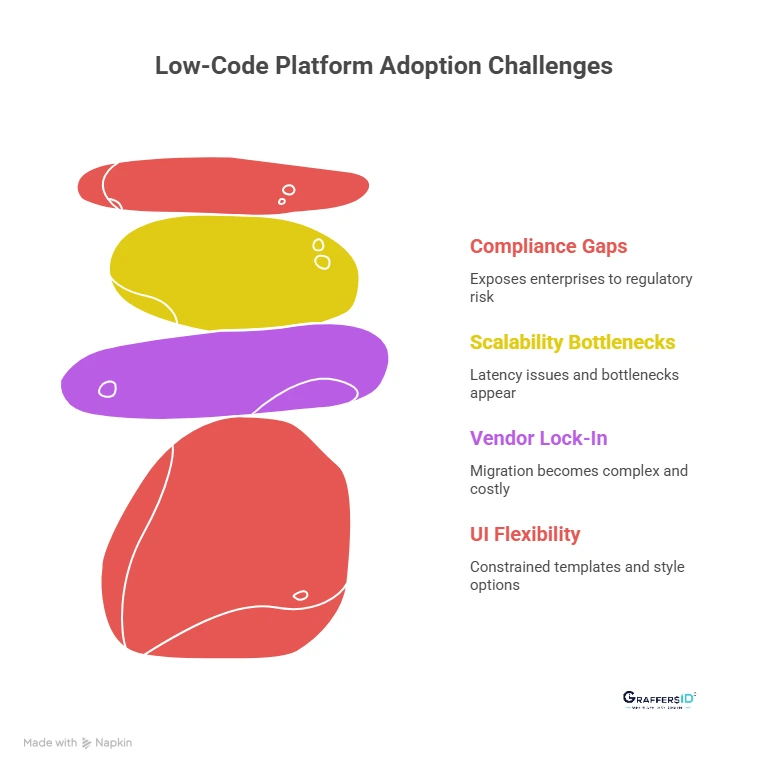
-
Limited UI & Design Flexibility: Many low-code tools still offer constrained templates and style options, making it hard to create highly bespoke user interfaces or branding experiences. For enterprises needing pixel-perfect UI or advanced animations, custom code may still be required.
-
Risk of Vendor Lock-In: Once built on a proprietary low-code platform, migrating apps, data, or workflows to a different system becomes complex and costly. Changes in pricing, features, or platform support carry significant risk for long-term projects.
-
Scalability & Performance Bottlenecks: When usage and data scale up, some low-code platforms begin to show latency issues or bottlenecks. In high-traffic or mission-critical applications, architecture limitations (like restricted backend control) may impede scalability.
-
Security, Compliance & Governance Gaps: Not all low-code tools fully comply with the latest regulations (e.g. GDPR, HIPAA, SOC 2). Weaknesses in role-based access control, audit trails, or data encryption can expose enterprises to risk in regulated industries.
Best 5 Low-Code Platforms for App Development in 2026
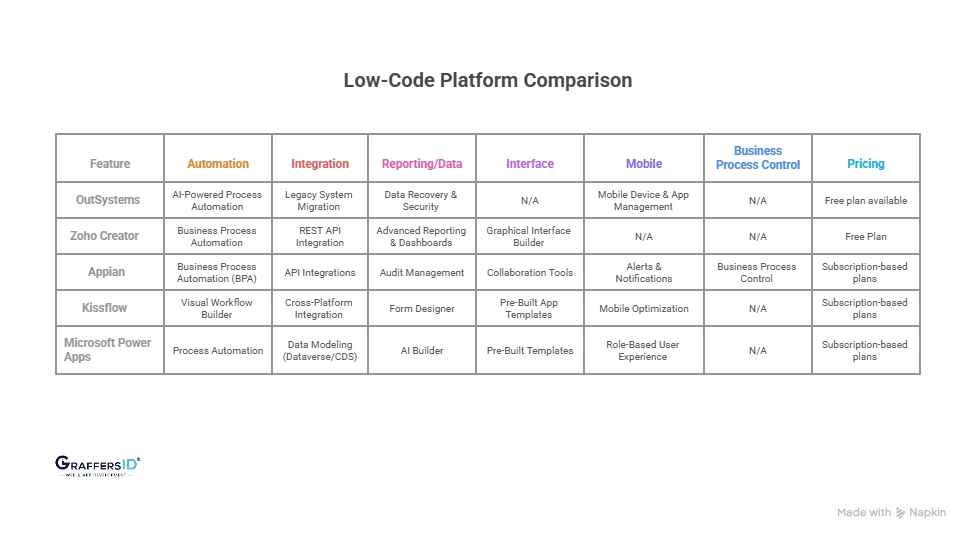
1. OutSystems: Best Enterprise Low-Code Platform in 2026
OutSystems is one of the most powerful low-code platforms in 2026, designed for enterprises that need to build and scale complex applications quickly. Unlike traditional development, it offers a drag-and-drop, AI-assisted environment that reduces coding requirements while maintaining enterprise-level flexibility and security.
Organizations across industries use OutSystems to modernize legacy systems, automate workflows, and launch customer-facing apps without long development cycles. With AI-driven tools, businesses can deploy production-ready applications in days instead of months, making it a go-to solution for CTOs and product leaders.
Key Features of OutSystems in 2026
-
AI-Powered Process Automation: Automate repetitive workflows and business operations.
-
Mobile Device & App Management: Build, manage, and scale mobile apps smoothly.
-
Enterprise IT & Mobility Management: Centralized control for large-scale IT operations.
-
Data Recovery & Security: Built-in compliance, encryption, and disaster recovery.
-
Legacy System Migration: Simplify modernization with pre-built integration tools.
Pricing of OutSystems
- Free plan available
- Flexible subscription tiers
- Free trial for enterprises
2. Zoho Creator: Best Low-Code Platform for Business Automation in 2026
Zoho Creator is a powerful low-code development platform that enables businesses to build custom applications without heavy coding. With its drag-and-drop interface, AI-powered insights, and automation-first design, Zoho Creator helps organizations streamline processes, connect data, and scale applications across teams.
By enabling IT teams to offload repetitive development tasks, Zoho Creator empowers business units to innovate faster while reducing dependency on traditional coding.
Key Features of Zoho Creator in 2026
-
Graphical Interface Builder: Drag-and-drop workflows and app design.
-
Business Process Automation: Automate approvals, tasks, and reporting.
-
Pre-Built Templates & Modules: Speed up development with ready-made solutions.
-
REST API Integration: Connect smoothly with third-party apps and enterprise tools.
-
Advanced Reporting & Dashboards: Turn raw data into actionable insights.
Pricing of Zoho Creator
- Free Plan: Ideal for small projects or trials.
- Subscription Plans: Scalable pricing based on features and usage.
- Free Trial: Test before committing.
3. Appian: Best Low-Code Platform for Enterprise Automation in 2026
Appian is an enterprise-grade low-code development platform designed to help organizations build and automate business applications faster. It combines AI-driven workflows, data analytics, security, and governance in a single platform, making it a powerful tool for digital transformation in 2026.
Key Features of Appian in 2026
-
Collaboration Tools: Enable teamwork across departments
-
Business Process Control: Monitor and manage workflows in real time
-
Business Process Automation (BPA): Automate repetitive tasks with AI
-
Audit Management: Ensure compliance with regulatory standards
-
API Integrations: Connect smoothly with third-party apps and data sources
-
Alerts & Notifications: Real-time updates for teams and stakeholders
Read More: What Is Cursor AI? Features & Benefits for Tech Leaders in 2026
Pricing of Appian
- Subscription-based plans
- Free trial available
4. Kissflow: Low-Code Platform for Web, Mobile, and IoT Apps
Kissflow is one of the most popular low-code development platforms in 2026, designed for businesses that want to build applications quickly without deep coding expertise. Its drag-and-drop interface and pre-built component libraries make it easy for non-technical teams to design web apps, mobile apps, and even IoT solutions.
Unlike traditional app builders, Kissflow offers end-to-end automation, enabling enterprises to streamline workflows, integrate with multiple platforms, and launch scalable apps faster. From simple websites to feature-rich mobile solutions with video, graphics, and dynamic content, Kissflow empowers teams to deliver apps at speed.
Key Features of Kissflow in 2026
-
Pre-Built App Templates: Quickly launch apps with ready-to-use templates.
-
Visual Workflow Builder: Automate business processes with drag-and-drop workflows.
-
Form Designer: Build custom forms without coding.
-
Cross-Platform Integration: Connect apps with third-party tools and APIs.
-
Mobile Optimization: Native support for Android and iOS apps.
Pricing of Kissflow
- Subscription-based plans
- Free trial available for testing
5. Microsoft Power Apps (2026)
Microsoft Power Apps is one of the most popular low-code platforms in 2026, designed to help businesses build, deploy, and scale apps quickly without heavy coding. Integrated smoothly with Microsoft’s ecosystem (Office 365, Dynamics 365, and Azure), it empowers both technical and non-technical teams to automate processes and create enterprise-grade applications.
Key Features of Microsoft Power Apps in 2026
-
Pre-Built Templates: Quickly start projects with ready-to-use app templates.
-
AI Builder: Add intelligence with pre-built AI models for predictions, form processing, and automation.
-
Role-Based User Experience: Deliver personalized apps for employees, customers, and partners.
-
Process Automation: Integrates with Microsoft Power Automate for workflow automation.
-
Data Modeling (Dataverse/CDS): Securely manage business data with Microsoft Dataverse.
Pricing of Microsoft Power Apps
- Subscription-based plans (vary by user and app capacity)
How to Select the Right Low-Code Development Platform in 2026?
When selecting a low-code solution, decision-makers should evaluate:
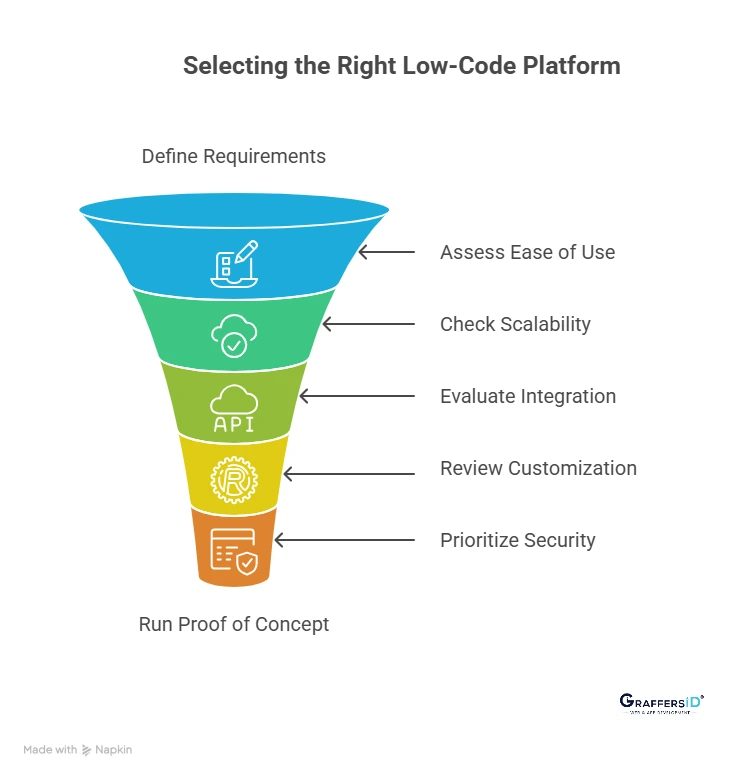
1. Define Requirements & Use Cases
Start by mapping out the types of applications you want to build, whether internal tools, customer apps, or workflow automation. Consider app complexity, data scalability, and required integrations before shortlisting platforms.
2. Assess Ease of Use
Look for platforms with intuitive drag-and-drop builders, pre-built templates, and AI-assisted features. A user-friendly interface ensures faster adoption across both technical and non-technical teams.
3. Check Scalability
Choose a low-code solution that supports cloud-native deployment, auto-scaling, and high-performance workloads. This ensures your apps can handle growing data volumes and user traffic smoothly.
4. Evaluate Integration Capabilities
A strong low-code platform should offer ready-made API connectors and smooth integration with third-party tools like CRMs, ERPs, or AI services. This reduces development time and avoids complex manual setups.
5. Review Customization & Extensibility
Ensure the platform allows adding custom code, plugins, or third-party frameworks. Flexibility in UI design, workflows, and features helps businesses meet unique industry or customer demands.
6. Prioritize Security & Compliance
Check for enterprise-grade security features like encryption, role-based access, and audit trails. Confirm the platform’s compliance with GDPR, HIPAA, or other industry-specific regulations.
7. Vendor Support & Community Strength
Select a platform backed by strong vendor support, regular updates, and active documentation. A vibrant developer community also helps with faster troubleshooting and innovation.
8. Analyze Total Cost of Ownership (TCO)
Look beyond subscription pricing, factor in scaling costs, integrations, and maintenance fees. The right platform should balance affordability with long-term business value.
9. Run a Proof of Concept (POC)
Before committing, test the platform with a small pilot project. A POC validates performance, integration ease, and scalability while reducing risks in long-term adoption.
Conclusion
Low-code development platforms have become a core enabler of digital transformation in 2026, empowering businesses to build applications faster, reduce costs, and integrate AI-driven automation without heavy coding expertise. These platforms are helping leaders accelerate innovation, modernize legacy systems, and deliver customer-centric solutions at scale.
By choosing the right low-code platform, organizations can unlock higher productivity, better customer experiences, and sustainable growth.
At GraffersID, we specialize in helping companies hire AI developers, build scalable web and mobile applications, and integrate AI-powered low-code solutions to stay competitive in 2026 and beyond.
Looking to accelerate your development journey? Connect with GraffersID today and bring your next big idea to life with our expert AI developers and AI-driven solutions.
